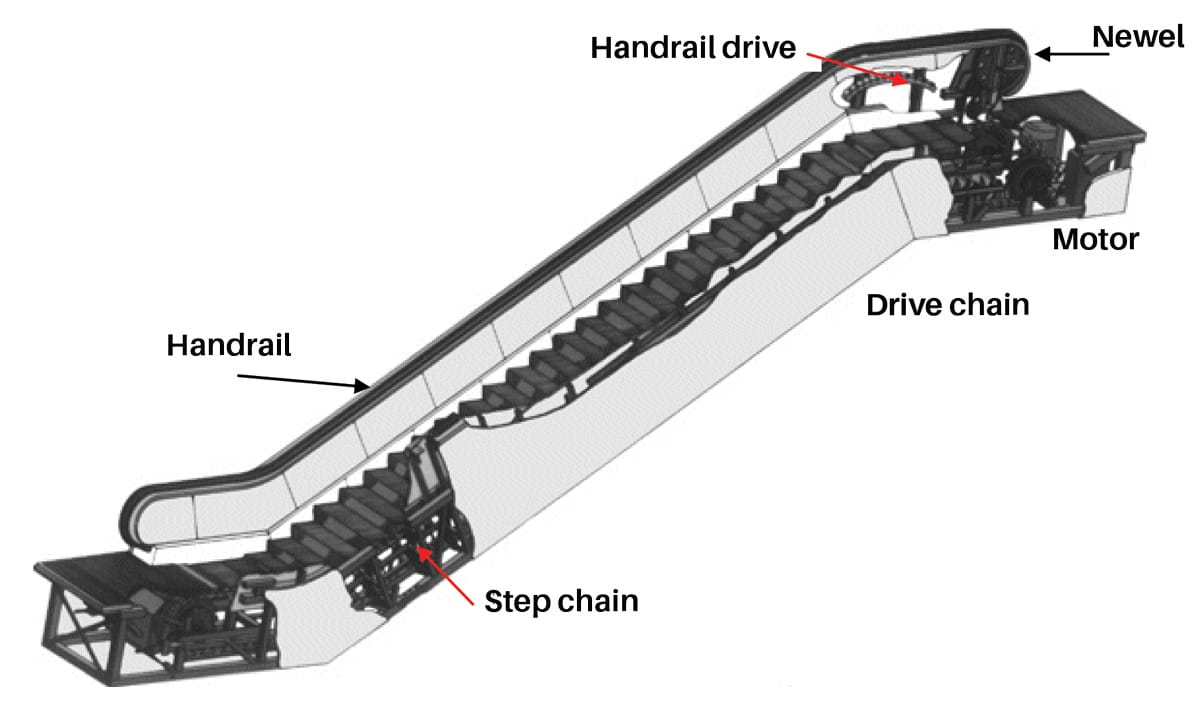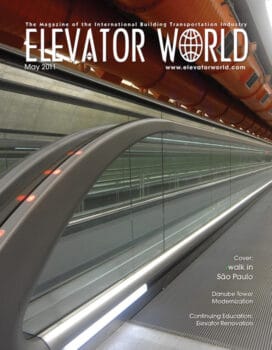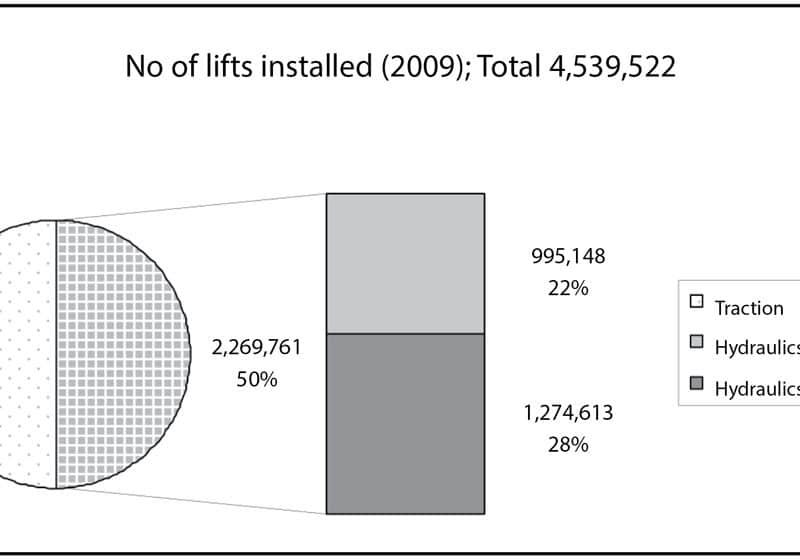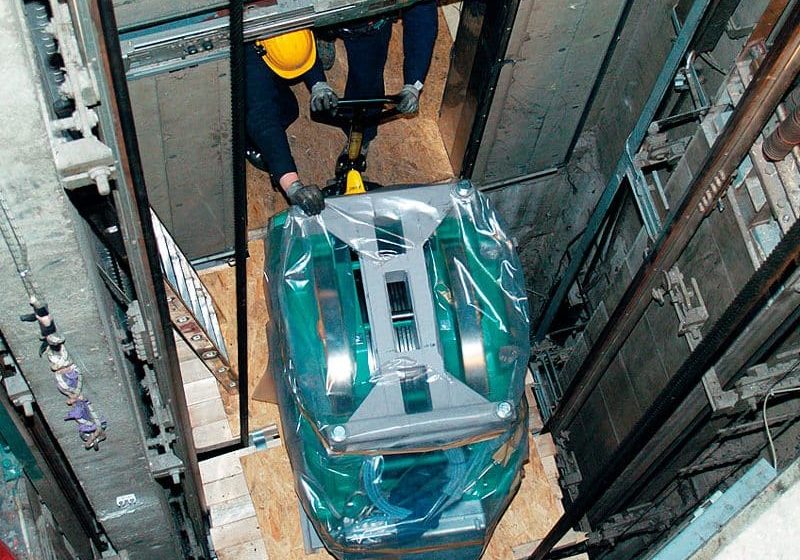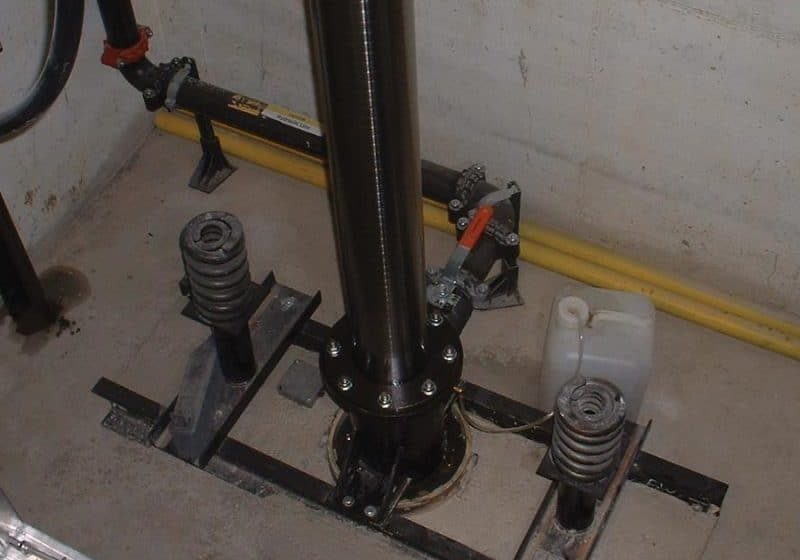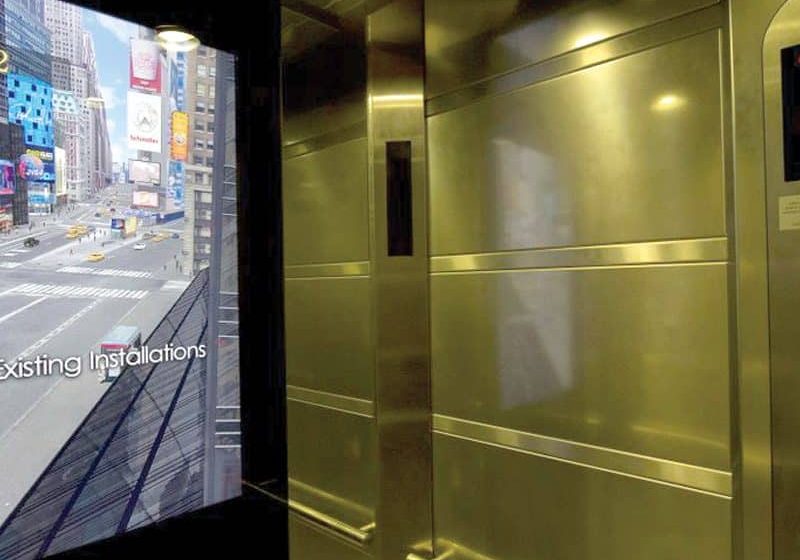by Davis L. Turner
Introduction
From time to time, the question arises as to the propriety of reversing the direction of travel of an escalator. The subject becomes particularly relevant when one of a pair of escalators might have to be removed from service for a long period of time to undergo repairs, or when a retail facility undergoes renovation and the management desires to alter patron flow for marketing reasons.
Scope
This report discusses the appropriateness of reversing the direction of an escalator that had been operating in only one direction for an extended period of time (10 to 15 years). Some of the results of reversing the direction after long periods of time are also discussed.
Background
Escalators entered the vertical-transportation market at the turn of the 19th century with one of the early Otis step-type escalators displayed at the Paris Exposition in 1900. For two decades thereafter, escalators exhibited either a flat-or cleat-type step design. Around 1920, the two designs were combined to arrive at an improved, flat, cleat-type step with finger-like combs at the upper and lower landings to allow a transition from the moving step to the stationary floor plate at the upper and lower landings.
Early escalators were designed to operate in one direction only, either up or down, and it was not possible to reverse the direction of the escalator. Later designs included the escalator to be reversible in that the direction of travel could be reversed from up to down direction or vice-versa. This feature allowed the use of a single escalator unit to serve between two landings. Depending on the predominance of passenger traffic flow and the duration of the passenger traffic, the escalator would run in one direction for a period of time until the passengers reached their destination, then the escalator would stop. Through a series of sensors, passengers coming from another direction would start the escalator running in the opposite direction for a short period of time to transport the passengers in the opposite direction, then stop and await the next demand and direction command. This reversing of the escalator direction would occur many times during a 24-hour period or even many times in an hour.
The automatic reversing operation fell out of favor due to the unreliability of the sensing devices, which rendered the operation ineffective.
The standard and most common practice for the application of escalators today is to provide one escalator for each direction of travel. The escalators are located in close proximity to each other and will typically have a dedicated direction. While the escalators are capable of being reversed, it is not common practice to do so.
Escalator Construction
Escalators are comprised of numerous chains, sprockets, bearings and gears, all mounted within a steel truss and powered by an electric
motor in a configuration that allows the steps to move along an incline (typically 30°) to transport passengers between two levels in a facility. Each escalator has a moving handrail, one on either side, moving at substantially the same speed and in the same direction as the steps and, like the steps, are driven by the motor located at the upper end of the escalator, which is connected to chains, sprockets and gears.
The motion of the steps and handrail is accomplished as rotational energy is transferred from the electric motor through chains, sprockets and gears. Sprockets turn chains and chain sprockets. Gears turn shafts with sprockets mounted thereto.
A partial list of the use of chains and sprockets includes:
- A main drive chain between the electric motor sprocket and the main drive sprocket or bull gear
- A step chain between the main drive sprocket and the steps
- A handrail drive chain between the main drive sprocket and the handrail drive sprocket and sheave
Effects of Wear
Over time, the chains, sprockets, gears and bearings will wear in a manner consistent with their design and use.
Chains (roller chains) will elongate or stretch over time due to pin wear caused by the articulation of the chain around a curve or sprocket and the pin pressure created by the tension in the chain. This elongation or stretch causes the chain to become incrementally longer over time and the pitch of the chain (distance between links) becomes greater.
Over time, sprockets will wear due to both the elongation of the chain and the contact between the chain and the teeth of the sprocket as the chain engages the sprocket. One side of each sprocket tooth will wear, depending on the rotation of the sprocket and tension in the chain.
Figure 2 illustrates the engagement of the chain with a sprocket and shows the “wear point” on the sprocket.
Figure 3 represents a chain in tension between two sprockets. The sprocket to the right is driven electromechanically and rotates in a clockwise direction. The sprocket on the left is an idler sprocket. It rotates clockwise due to the tension in the chain. The lower portion of the chain between the two sprockets is not in tension and hangs in a curve or catenary between those sprockets.
Like the chains, the handrails on the escalator will stretch or elongate over time. The additional length of the handrail is compensated for in the catenary of the handrail on the untensioned side of the handrail within the balustrade.
Over time, the wear will increase to a point where adjustments are made to the chain tension, sprocket location and handrail drive and tension components to ensure proper operation of the escalator. As the escalator continues to run in one direction, additional adjustment may be required.
Reversing the Escalator Direction
Reversing the escalator to operate in the opposite direction will cause the wear and friction points of the chains and sprockets, as well as the compensation for the additional handrail length or chain length to change position. There will be different wear points, and the catenaries in the chains and handrails will change.
Figure 4 represents the same driven sprocket shown in Figure 3. Operating in the opposite (counterclockwise) direction the wear point on the sprocket tooth changes to the opposite side.
The catenary shown in Figure 5 will appear on the untensioned side of the chain or handrail.
Reversing the escalator after reasonable periods of time (one to two months) would cause the wear on the chains, sprockets and gears to equalize and reduce the amount of wear on any one part of the sprocket or chain. The amount of wear would be spread among the various friction or wear points over a long period of time.
Operating the escalator in one direction for extended periods of time causes the wear to increase to the extent that reversing the escalator and changing the wear points and catenaries will cause damage to the equipment. This could result in chains “jumping” from sprockets or the catenary of the chain coming in contact with truss members increases. Simple adjustments are not possible if the wear is significant. Many parts (chains and sprockets) will have to be replaced.
Handrails are guided on tracks on the exposed portion of the escalator along the line of travel. As the handrail curves around the newel at the landings, it is not guided on tracks. The extra length of the handrail could appear as excess handrail at the newels and could possibly come off the newels and handrail guides.
The considerations described apply equally well to moving walks as they do to escalators. The same precautionary steps should be taken if it is desired to reverse the direction of travel of a moving walk.
Summary
Reversing the escalator direction is only an acceptable practice if done at short intervals and if initiated during the first few months after the escalator is installed. One to two months would be the longest interval suggested. Reversing the escalator direction is not a good practice if the escalator has been operated in only one direction for a long period of time. Reversing an escalator after it has been operated in only one direction for a long period of time should only be done after sprockets and chains in the main drive system and handrail drive system have been replaced.
It is not possible to predict or foretell with any certainty what kind of damage may occur if an escalator is reversed after it has been operated in one direction for years.
Other Considerations
Reversing the direction of travel of an escalator may not be possible for reasons other than the wear on chains and sprockets. Security considerations in public transportation facilities such as airports may preclude the reversal of escalator travel where the escalator crosses security lines.
When reversing the direction of travel of the escalator, consideration should be given to the location and wording of instructional or directional signs (as are found in department stores and public assembly buildings) guiding patrons to the escalators.
Perhaps the most obvious condition where reversing the direction of escalator travel can be easily accomplished are where escalators are used in a “parallel-adjacent” and “criss-cross adjacent” configurations.[1]
The facts and opinions expressed herein are those of the writer based on his education, training and experience, and are not represented as official opinions of any organization of which he is a member.
Reference
[1] Strakosch, The Vertical Transportation Handbook, 4th Ed. p.243
Get more of Elevator World. Sign up for our free e-newsletter.
